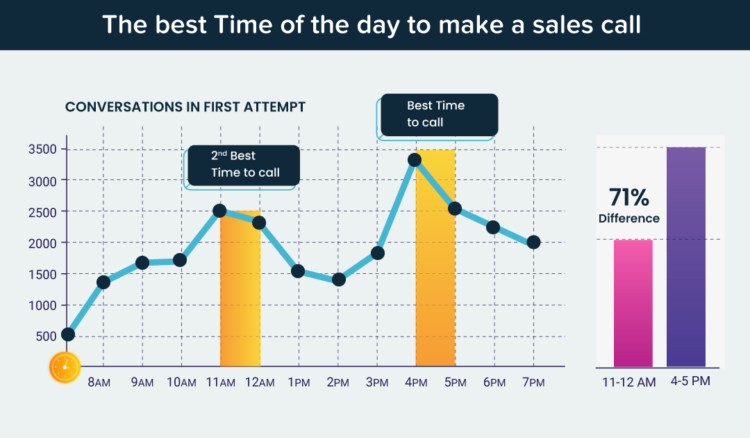It’s not enough to only receive customer calls, perhaps from an online marketing campaign, and make or break a deal. You need in-depth analysis about that particular phone call and all others to have a better understanding of what influenced web users to call your business and how you can take advantage of such factors to get even more calls. That’s the very essence of call tracking.
Page Contents [show]
How Call Tracking Works

img source: ringba.com
You first need to have a specific business line where you’d like potential customers to contact you. Then get unique phone numbers from call tracking providers such as https://www.dial800.com/solutions/call-tracking/.
These numbers are the ones that are displayed on your website, social media pages, and other online ads. Whenever a web user calls the number provided, the call is automatically forwarded to your business line without the caller’s knowledge. That way, the call can be analyzed to reveal details such as
- caller’s name
- telephone number used
- the location they called from
- duration of the call
- caller’s timeline
Apart from these, the sites and web pages they visited before the call and any alternative communication methods they used are also analyzed, as well as the exact campaigns that influenced the web user to make the call. If you use tracking phone numbers for offline advertisements, such as on printed brochures, TV commercials, radio ads, yellow pages, direct mail, and flyers, such sources can also be tracked.
Typically, it’s good practice to have a unique number for every campaign you launch, every site you maintain, and every offline advertisement you do. This way, you can easily tell the source of the call for analytics purposes.
An advanced approach involves dynamic number insertion. You’re provided with a code snippet by your call tracking provider. When you install this on your website, every unique visitor sees a different phone number. And when they dial the number, their web session is tied to that phone number. This way, you’re able to know what brought the visitor to your site.
Call Tracking Metrics

img source: agencyanalytics.com
You now have a clear understanding of how call tracking works. Next, you need to know some common call tracking metrics and how important they are for your business.
1. Caller ID
How do you feel when a particular company calls you and addresses you by your real name? A sense of belonging immediately kicks in. You feel that the caller really cares for you. That’s exactly what you should do for your current and potential customers. It sounds quite systematic and uncaring to address someone with ‘sir,’ ‘madam,’ or even ‘hi there.’ These terms lack a personal touch and may be a turn-off to your potential customers.
Call tracking ensures you get the caller’s name and the phone number they used. This way, you can call them back and initiate a personalized conversation that they’ll most likely enjoy. Maybe they’d even order your products or services.
Additionally, call tracking enables you to categorize callers as first-time or repeat callers. A good number of first-time callers is a good indication that your business is expanding its customer base. A fairly constant number of repeat callers is proof your business is good in customer retention. Zero repeat callers may be a telltale sign of poor customer loyalty.
2. Call Source

img source: foxxr.com
When you market your products or services through advertisements, you usually long to know how each particular ad performed. The performance here can be gauged by the number of calls influenced by a particular marketing campaign.
If you place a single business line on all your website, social media pages, pay-per-click advertisements, and offline ads, you won’t be able to tell exactly which one of these led to the call. You’ll find it difficult to pinpoint the underperforming campaigns.
But with call tracking, you’re able to tell the exact number of calls influenced by a particular marketing campaign. You’re also in a position to know which campaigns backfired when they generated zero leads.
This information helps you tweak your marketing strategies to improve the poorly performing campaigns or make a decision to entirely abandon them. Also, you may use such information to decide on which successful campaigns to focus your budget and efforts on.
3. Volume Trends
Suppose you tirelessly worked on your first video ad and got 50 calls from it. After taking into account public feedback, your second video ad came out even stronger and attracted 150 calls. If you do this periodically, say monthly, you’ll need to know the call volume tied to a particular ad in relation to the rest of the ads.
If every subsequent ad leads to an increased number of callers, it’d be safe to conclude that your efforts are paying off. When the number of calls plateau no matter how much effort and creativity you put into the video campaigns, you can rightly assume that you reached your peak. And if the call volumes dwindle with every subsequent video released, you may want to dig deeper and know why customers are losing interest in your products or services.
4. Time Of The Day You Receive Calls

img source: softwaresuggest.com
Consider a situation where you receive zero calls in the morning, 200 calls around lunchtime, and only 3 calls in the evening. This doesn’t happen by chance. It may be that your services or products get in high demand around midday and significantly fall out of demand during the rest of the day.
Armed with such information, you can intensify your campaigns slightly before lunchtime to attract even more customers. Likewise, you can adequately staff your business around the peak times to ensure each and every customer is properly and timely served. For off-peak hours, you can deescalate your campaigns and perhaps incentivize customers through generous discounts.
In Summary
Call tracking is an essential component of marketing campaigns. Your marketing efforts should never end with a successful ad placement. You need to monitor and analyze the performance of every product promotion campaign you launch. Registering for a tracking phone number helps you know which campaigns turned out successful and which ones performed below expectations.





